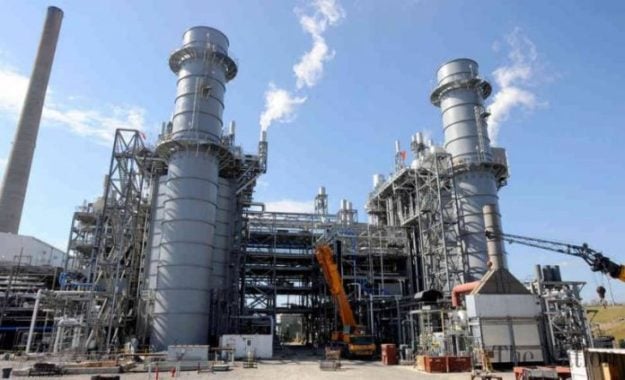Navigating the intricate labyrinth of energy reforms is a daunting task, especially in a dynamic country like Pakistan. Here, the energy sector seems to be perpetually caught in a dance between crises and makeshift solutions. At a recent high-profile conference organized by the World Bank and the Pakistan Institute of Development Economics (PIDE), the energy sector’s turbulence was vividly portrayed. The problems were attributed to deep-rooted governance and mismanagement challenges.
Let’s get one thing straight: Pakistan’s energy challenges are deeply rooted in management issues, not merely capacity. Focusing solely on capacity is akin to looking at a vast landscape through a narrow keyhole. We need to take a step back, broaden our perspective, and see the entire panorama, where governance and management seamlessly align with global corporate governance standards. When you dive deep into Pakistan’s energy landscape, you will discover it is a rich and varied narrative, not just about electricity. A surprising 40 percent of the country’s primary energy comes from humble firewood (biofuels). This is followed by 20 percent each from imported oil and natural gas. Another 11 percent is a blend of hydel, solar, nuclear, and bagasse methods. Coal, often seen as a relic, still contributes 9 percent. This diverse mix paints a picture of an energy sector that is much more multifaceted than just its electric component.
While immediate concerns like recovery drives and bill collections are undoubtedly important, they barely scratch the surface of the mammoth challenge that is the energy sector. We must face the looming challenges head-on, especially the intricate bureaucratic obstacles and political-economic roadblocks that define the very fabric of governance. Drawing inspiration from the iconic Game of Thrones quote, “Chaos is a Ladder,” we should view the current turbulence not as a setback but as an opportunity— a stepping stone to ascend to greater heights
Rewind to the era of 2007-2013, under General Musharaf’s leadership, and you will find the electricity sector ensnared in a vortex of short-sighted decisions. As the thirst for electricity grew exponentially, streets across the nation echoed with the frustrated voices of citizens protesting against load-shedding. The PPP’s tenure was overshadowed by challenges like sky-high inflation, relentless 18-hour load shedding, and a debilitating energy deficit. Then came the PML(N) government in 2013, riding on a wave of promises to drastically reduce load shedding. But their gaze was fixed firmly on the political horizon, often sidelining the broader vision of long-term economic prosperity.
Their master strategy? Wooing investors with alluring Purchasing Power Agreements (PPAs) that were intricately tied to ever-fluctuating economic indicators. While this strategy brought a fleeting sense of relief, it has now spiraled into a financial nightmare characterized by skyrocketing tariffs, a ballooning circular debt, and government-enforced cuts to electricity subsidies. The irony of the situation is palpable: we are awash in unused capacity, yet the bills keep piling up. Some visionaries see a glimmer of hope in the Thar Coal reserves. However, banking solely on coal in today’s world is akin to betting on a sinking ship. The global narrative is shifting towards renewables, and our international reputation is increasingly tethered to our environmental commitments.
But the energy story doesn’t end there. We need a visionary master plan that seamlessly integrates all facets of energy. Consider the ambitious Sustainable Development Goal (SDG) 7, which dreams of universal clean energy access by 2030. Pakistan faces a steep climb to reach this summit. A particularly worrying trend is the majority of households still clinging to traditional firewood and using inefficient stoves for their daily cooking. And with our natural gas reserves on a rapid decline, the horizon looks increasingly stormy. On the transport front, we are still in the slow lane when it comes to adopting sustainable solutions.
To put things into stark perspective, consider our monthly $1 billion petroleum import bill. A mere 30 percent reduction in this consumption translates to a staggering annual saving of $3.6 billion! The mantra for the future? Harness “one fuel for multiple energy services.” This approach not only aligns perfectly with SDG7 but also addresses the critical aspect of energy efficiency, seasonal demand fluctuations, and the impending gas shortage that looms large.
Efficiency is more than just a buzzword; it is the cornerstone of a sustainable future. Historically, we have often misused our precious natural gas reserves on non-strategic, and at times, downright unproductive pursuits. Take a moment to digest this: a staggering 50 percent of our electricity consumption is by homes, often spent cooling poorly designed spaces that trap heat. As Dr. Fayyaz of the LUMS Energy Institute astutely observes, such practices offer minimal returns on investment. We urgently need to channel our energy resources towards fostering meaningful industrial growth. This vision can be realized by embracing the forward-thinking efficiency standards proposed by the National Energy Efficiency and Conservation Authority (NEECA). By powering our special economic zones with cutting-edge renewables, we can supercharge our industrial output, setting the stage for a prosperous future.
Now, let’s delve into the “economics of corporate governance.” To effectively tackle the deep-seated inefficiencies plaguing electricity distribution companies (DISCOs) in Pakistan, we need a boardroom filled with energy experts
This specialized knowledge can revolutionize everything from bill recovery to distribution, and even digitization. But governance is just one piece of the puzzle. Introducing a vibrant competitive landscape can ignite essential reforms in the electricity distribution sector. By fostering competition, separating line operations from administration, and implementing related reforms, we can strike a delicate balance—one that safeguards consumers while promoting innovation.
trategies like privatization, liberalization, and merit-based initiatives can create a dynamic ecosystem where companies are constantly pushed to innovate, compete, and deliver unparalleled service excellence. Academic insights, thus, hold the key to sculpting a resilient and efficient electricity distribution framework for Pakistan. As the government charts its course with the Circular Debt Management Plan (CDMP) under the watchful eyes of the IMF, fostering competition through privatization will be pivotal in enhancing service quality and optimizing bill recovery.
In wrapping up this deep dive into Pakistan’s energy landscape, it is imperative to underscore that the bedrock of a successful energy transformation is rooted in efficient and visionary governance. While the Ministry of Energy is undoubtedly at the helm, sometimes the most strategic move is to let the experts— be they engineers, economists, or environmentalists— take the lead, ensuring their efforts align with the MoE’s overarching vision.
While immediate concerns like recovery drives and bill collections are undoubtedly important, they barely scratch the surface of the mammoth challenge that is the energy sector. We must face the looming challenges head-on, especially the intricate bureaucratic obstacles and political-economic roadblocks that define the very fabric of governance. Drawing inspiration from the iconic Game of Thrones quote, “Chaos is a Ladder,” we should view the current turbulence not as a setback but as an opportunity— a stepping stone to ascend to greater heights.
By focusing on long-term, integrated planning, we can avoid the pitfalls of short-sighted solutions. As Professor Stefan Dercon of Oxford University insightfully remarked, “We know the ingredients, but not the recipe.” Echoing this sentiment, Mr. Najy Benhassine of the World Bank emphasized that the solutions for Pakistan must emerge from within, not be imposed from the outside
The writer has a doctorate in Energy Economics and serves as a Research Fellow in the Sustainable Development Policy Institute. He can be reached at [email protected] and tweets @Khalidwaleed_.























